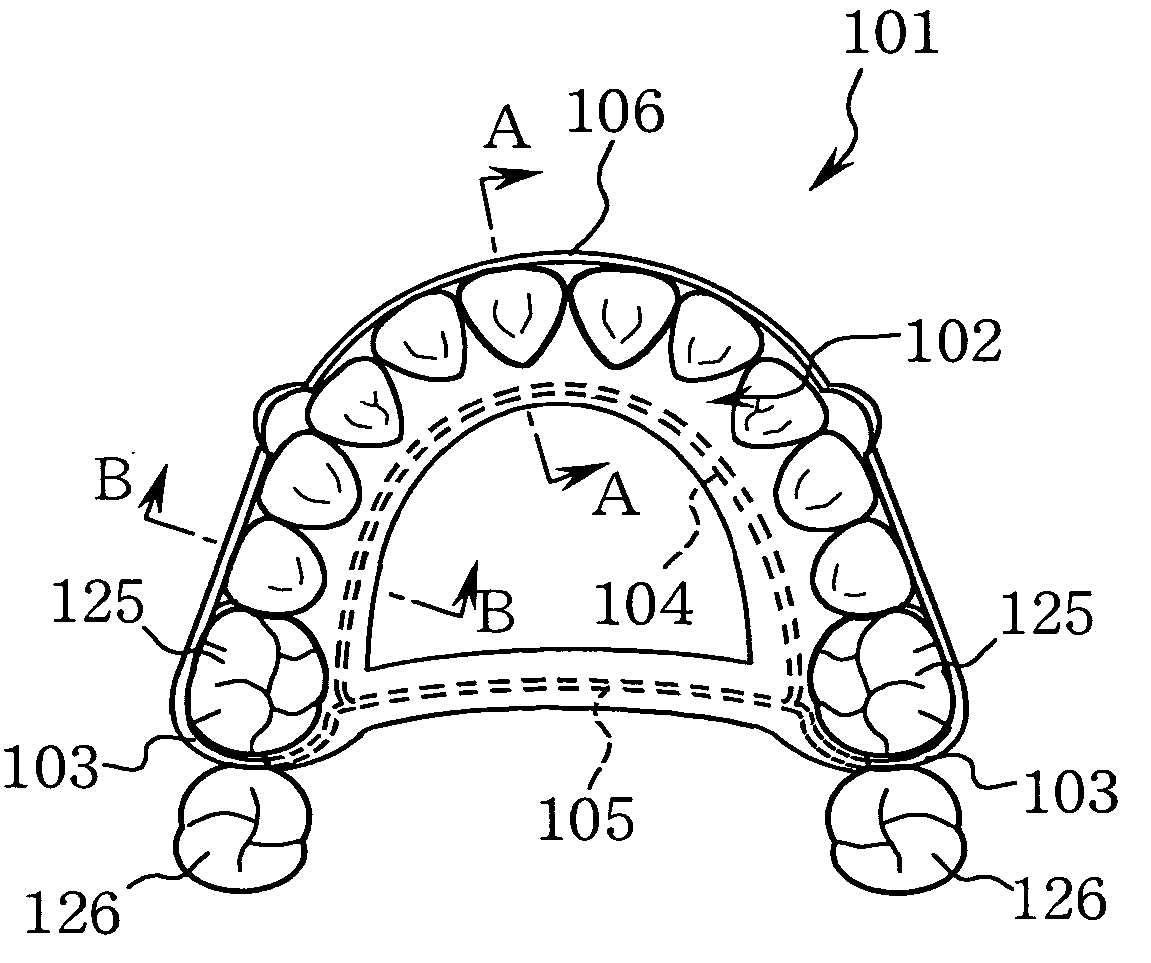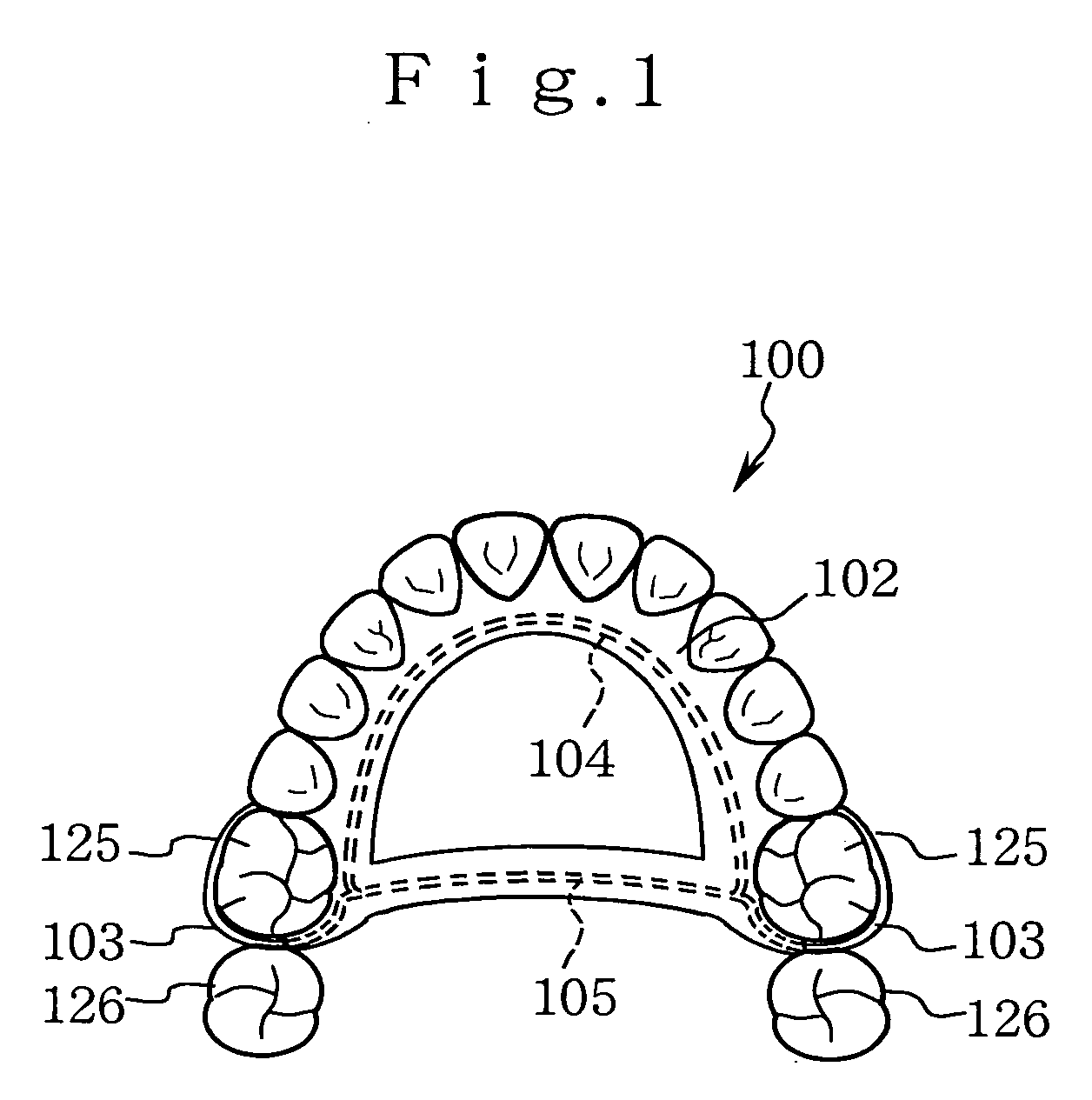Orthodontic retainer
a retainer and orthodontic technology, applied in the field of orthodontic retainers, to achieve the effect of effective strengthening each other, reducing the amount of synthetic resin, and ensuring the stability of the tooth
- Summary
- Abstract
- Description
- Claims
- Application Information
AI Technical Summary
Benefits of technology
Problems solved by technology
Method used
Image
Examples
Embodiment Construction
[0118] An embodiment of a retainer in accordance with the present invention will be explained with reference to the accompanying drawings.
[0119]FIG. 1 shows the maxillary retainer 100 according to the embodiment of the present invention. The maxillary retainer 100 has a frame-like resin plate 102 that includes unevenness fitting with inside surfaces of teeth and one side traversing a posterior edge of a palate thereof and has a shape with a central portion thereof hollowed out leaving a part of 4-5 mm from a contour periphery thereof. A reinforcing wire 104 is embedded in the resin plate 102 along the inside surfaces of the teeth, and a bridge wire 105 is embedded therein along the side traversing the posterior edge of the palate. Both ends of the bridge wire 105 are brazed to both ends of the reinforcing wire 104. Further, a C clasp 103 is brazed to each of the ends of the reinforcing wire 104.
[0120] The maxillary retainer 100 is attached on the teeth with the C clasps 103 hooked...
PUM
 Login to View More
Login to View More Abstract
Description
Claims
Application Information
 Login to View More
Login to View More - R&D
- Intellectual Property
- Life Sciences
- Materials
- Tech Scout
- Unparalleled Data Quality
- Higher Quality Content
- 60% Fewer Hallucinations
Browse by: Latest US Patents, China's latest patents, Technical Efficacy Thesaurus, Application Domain, Technology Topic, Popular Technical Reports.
© 2025 PatSnap. All rights reserved.Legal|Privacy policy|Modern Slavery Act Transparency Statement|Sitemap|About US| Contact US: help@patsnap.com



